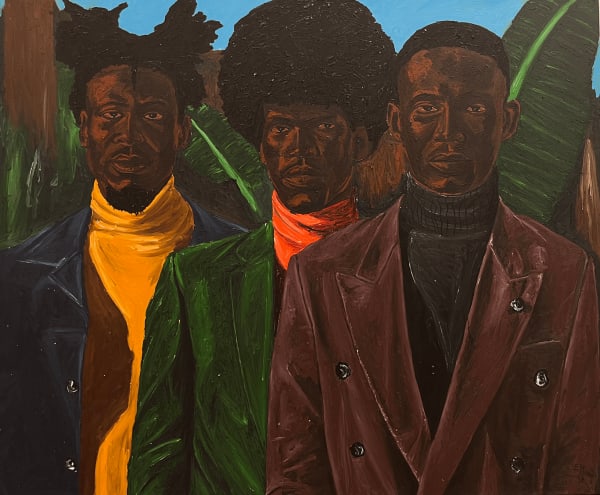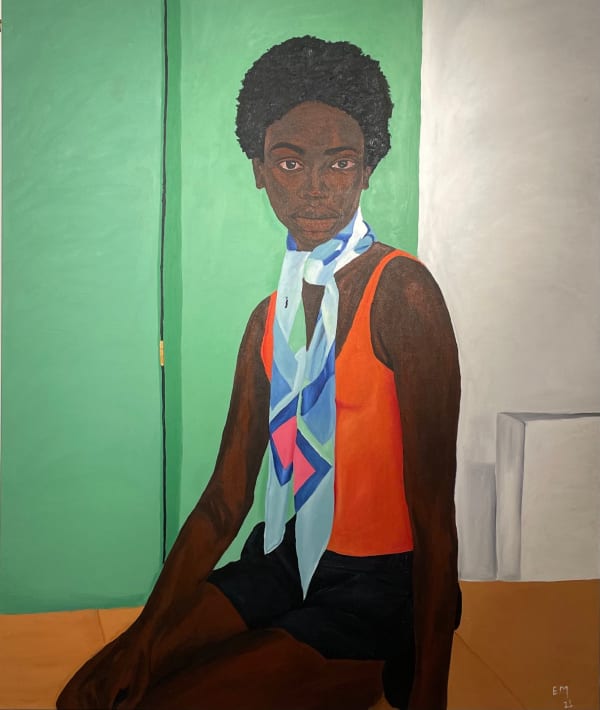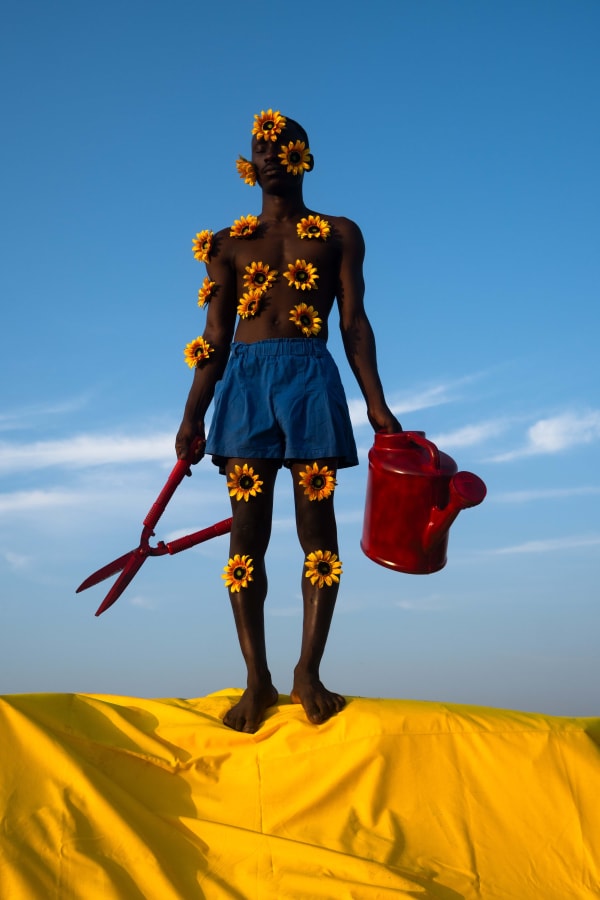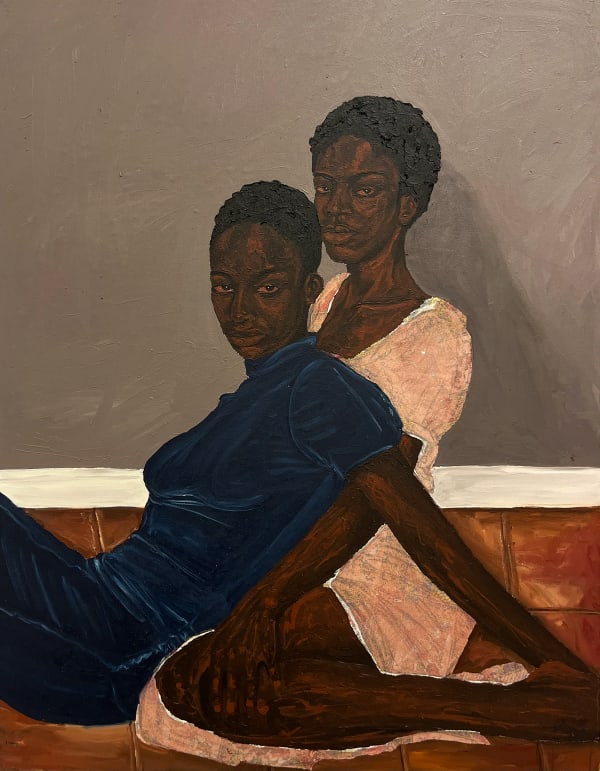Matthew Eguavoen
Biography
MATTHEW EGUAVOEN WAS BORN IN 1988 IN EDO STATE, NIGERIA. HE CURRENTLY LIVES AND WORKS IN LAGOS.
Matthew Eguavoen attended the University of Port Harcourt, where he attained a Bachelors in Science for Civil Engineering and Structures. In his final year at the university of Port Harcourt, he decided to pursue his passion for creating art through self-study, where he continued his artistic development.
A full-time contemporary painter, he depicts his figurative and portrait subjects using a combination of oil paint, acrylic paint, charcoal, and graphite pencils to document stories that encompass the emotions and demeanor of his muse to the viewer of his work. Eguavoen uses his work to address the societal, economic, and political views across the complex intersectionality that Nigerians face in different facets of life. The constraint of societal ideology about life, on human existence and survival.
As an artist he is deeply concerned about the impact of his work on his immediate environment and the world at large and that is why themes of his art centers around the societal, political and economic imbalance taking over humanity happiness, swamping over the essence of society.
A full-time contemporary painter, he depicts his figurative and portrait subjects using a combination of oil paint, acrylic paint, charcoal, and graphite pencils to document stories that encompass the emotions and demeanor of his muse to the viewer of his work. Eguavoen uses his work to address the societal, economic, and political views across the complex intersectionality that Nigerians face in different facets of life. The constraint of societal ideology about life, on human existence and survival.
As an artist he is deeply concerned about the impact of his work on his immediate environment and the world at large and that is why themes of his art centers around the societal, political and economic imbalance taking over humanity happiness, swamping over the essence of society.
Eguavoen’s works are featured in collections across West Africa, USA, Europe, and North America.
Works
-
 I still have faith in the midst of Everything, 2023
I still have faith in the midst of Everything, 2023 -
 In the end nothing and everything matters, 2023
In the end nothing and everything matters, 2023 -
 The Silence After The Conversation, 2023
The Silence After The Conversation, 2023 -
 Lean on me, 2023
Lean on me, 2023 -
 Amidst the Divide , 2022
Amidst the Divide , 2022 -
 Behind Every successful Adam, 2021
Behind Every successful Adam, 2021 -
 Chi akpóóla (Chi has called), 2022
Chi akpóóla (Chi has called), 2022 -
 Conversations we must have , 2022
Conversations we must have , 2022 -
 I Can’t give what you’re asking in exchange for mentorship, 2021
I Can’t give what you’re asking in exchange for mentorship, 2021 -
 I made my Home Here, 2022
I made my Home Here, 2022 -
 I Was my parents' flower girl, 2021
I Was my parents' flower girl, 2021
Exhibitions
-

Inhabiting the World
Group Show 4 Jul - 10 Aug 2024From July 4th to August 10th, AFIKARIS hosts its traditional summer group show. This year, Inhabiting the World unveils the work of 12 artists and approaches the complexity of human beings through their relationship with the world.Read more
-

Ukhurhę
Matthew Eguavoen 21 Mar - 4 May 2024Matthew Eguavoen's second solo presentation in Paris takes place from March 21st to April 27th at AFIKARIS Gallery. This new body of work, gathered under the title Ukhurhę, evokes depression and regrets that mental health has been for a long time - and still is - neglected, stigmatised and invisibilised on the African continent.Read more -

Classique!
Group show 16 Jul - 17 Sep 2022We are thrilled to announce the opening of our new Parisian space located at 7 rue Notre-Dame-de-Nazareth, 75003 Paris. The inaugural exhibition Classique! - featuring works by - Moustapha Baidi Oumarou, Matthew Eguavoen, Salifou Lindou, Omar Mahfoudi, Richard Mensah, Ousmane Niang, Jean David Nkot, Nana Yaw Oduro, Hyacinthe Ouattara, Daniel Pengrapher and Marc Posso - it will take place from July 16th to September 17th.Read more -

Egbé Okpá
Matthew Eguavoen 2 Apr - 3 May 2022Matthew Eguavoen's portraits stage his thoughts on Nigerian society. He explores social, economic and political issues through the eyes of his models. His new series of works presented in the...Read more
Art Fairs
-
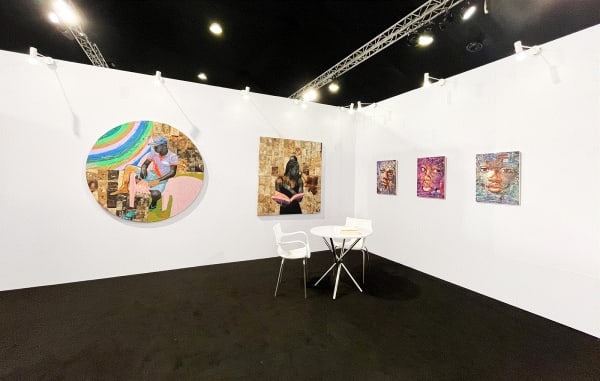
Art X Lagos
Lagos | Nigeria 4 - 6 Nov 2022EXHIBITING ARTISTS: Matthew Eguavoen Emma Odumade Jean David Nkot Ousmane NiangRead more -
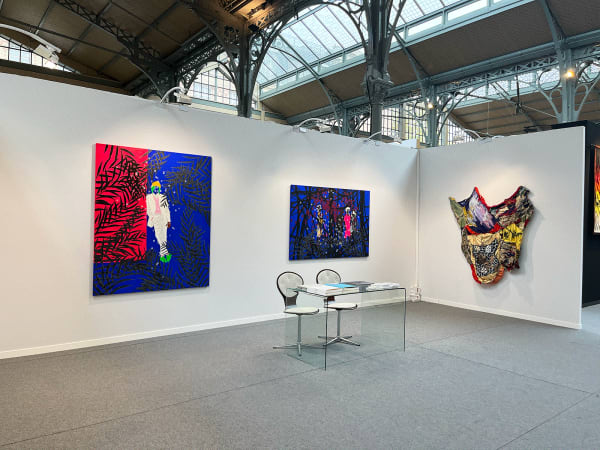
AKAA
Paris | France 21 - 23 Oct 2022EXHIBITING ARTISTS: Matthew Eguavoen Jean David Nkot Moustapha Baidi Oumarou Hyacinthe OuattaraRead more -
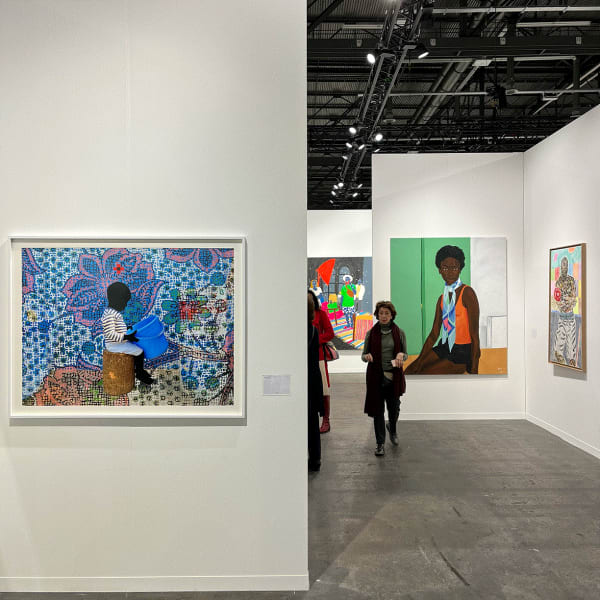
Artgenève
Geneva | Switzerland 3 - 6 Mar 2022EXHIBITING ARTISTS: Matthew Eguavoen Moustapha Baidi Oumarou Omar Mahfoudi Saïdou Dicko Salifou LindouRead more -
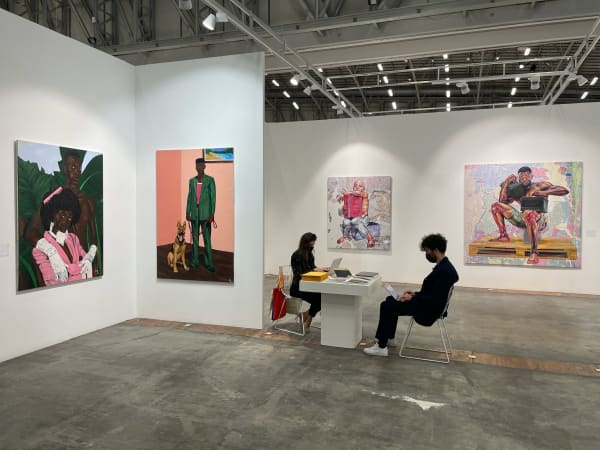
Investec Cape Town
Cape Town | South Africa 18 - 20 Feb 2022EXHIBITING ARTISTS: Salifou Lindou Jean David Nkot Crystal Yayra Anthony Matthew Eguavoen Ousmane NiangRead more
Press
Interview
On the occasion of Matthew Eguavoen's solo show Ukhurę held at the gallery (21 March – 27 April 2024), the artist has been asked a few questions about his inspirations and the genesis of this exhibition.
Thank you for agreeing to discuss your second solo exhibition at AFIKARIS Gallery titled Ukhurę running until April 27th. Could you share with us some insights into the exhibition and what inspired its creation?
Ukhurę embodies the connection between the spiritual realm and the physical world. The term originates from Benin, Edo State (where I am from) and refers to a carved staff. In our tradition, when the head of a family passes away, it is the duty of the eldest son to craft this staff. It serves as a mean for communication between the living and the ancestors, with the father acting as the mediator. I draw parallels between this tradition and modern therapy sessions, where individuals share their struggles and challenges. Just as in the tradition, these sessions provide a platform for cathartic conversations. In our culture, we gather with elders at the family shrine, engaging in dialogue with our ancestors, unburdening ourselves from life's challenges. Emerging from these sessions, there's a sense of lightness, as if the weight of our burdens has been lifted.
The shrine you are referring to is an installation within the exhibition, entitled “My Family therapist”. Could you describe it and delve into its significance?
Certainly. "My Family Therapist" seeks to recreate the atmosphere of my family's shrine. It features offerings of food, fruits, and sometimes money, arranged on plates as a sign of reverence to the gods before we engage in dialogue with our ancestors. This installation serves as a visual representation of the sacred space where we honor our lineage and engage in meaningful conversations with our familial spirits.





